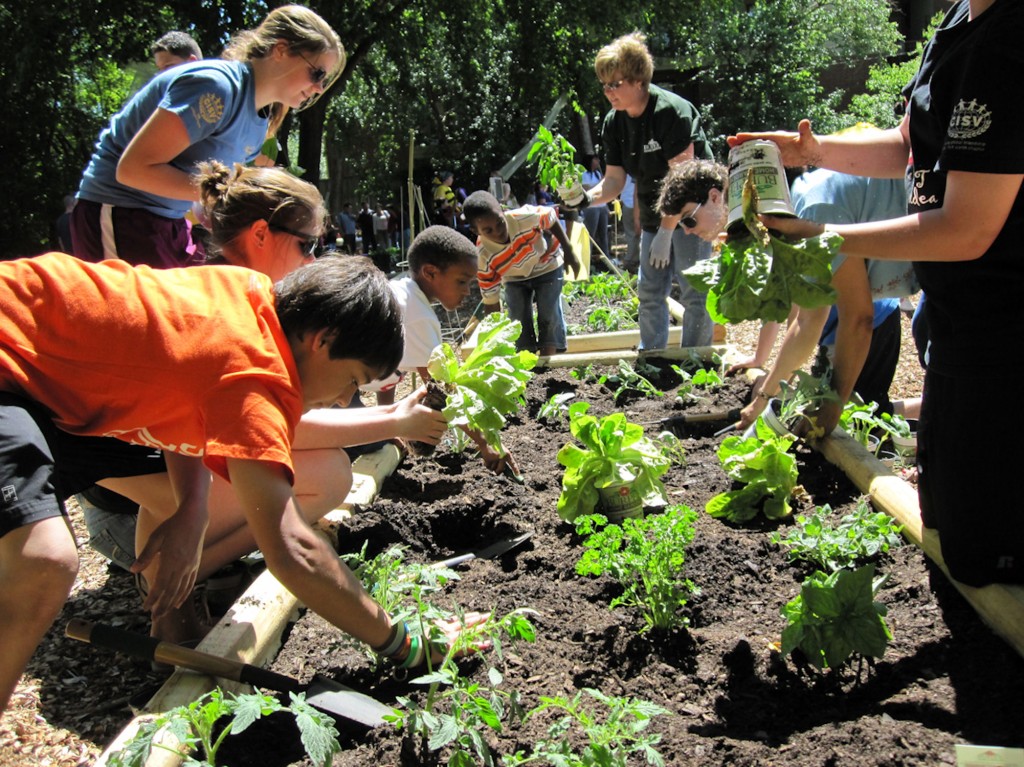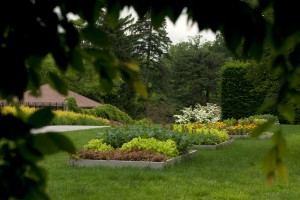Inside The New York Botanical Garden
gardening
Posted in The Edible Garden on November 23 2010, by Plant Talk
Written by Burpee Home Gardens Team. Burpee Home Gardens was a Supporting Sponsor of The Edible Garden.
 Getting kids to make healthy food choices can be a struggle. One of the best ways to encourage children to eat more fruits and vegetable is to provide them with a sense of ownership and understanding of where their food comes from. Children-focused vegetable gardens are a great way to start.
Getting kids to make healthy food choices can be a struggle. One of the best ways to encourage children to eat more fruits and vegetable is to provide them with a sense of ownership and understanding of where their food comes from. Children-focused vegetable gardens are a great way to start.
In 2010, Burpee Home Gardens was happy to sponsor a handful of community and youth gardens all over the United States through its “I Can Grow” initiative. We saw the excitement in the participants’ eyes, and we were honored to be a part of programs like The New York Botanical Garden’s The Edible Garden, where the interest in cooking with home-grown produce was celebrated.
Now we’re thrilled to be offering even more chances for youth- and education-focused gardening programs to get the funding and plants they need to be successful and fun. The 2011 “I Can Grow” Youth Garden Award will support and sponsor urban school and community youth gardens with vegetable and herb plants, garden layout expertise, event promotion, and of course money for supplies!
Learn how to apply for this award below.
Posted in Exhibitions, The Edible Garden on July 16 2009, by Plant Talk
 |
Kristin Schleiter is Curator of Outdoor Gardens and Herbaceous Collections. |
 Have you been toying with the idea of starting a vegetable garden but you aren’t sure just how to do it? The Beginner’s Vegetable Garden, across from the Ruth Rea Howell Family Garden, is the perfect place to learn the basics. We planted popular vegetable varieties like ‘Early Girl’ tomatoes and jalapeno peppers in simple raised beds that receive sun all day long. We used a number of different easy-to-find support structures to give you ideas that you might want to try at home.
Have you been toying with the idea of starting a vegetable garden but you aren’t sure just how to do it? The Beginner’s Vegetable Garden, across from the Ruth Rea Howell Family Garden, is the perfect place to learn the basics. We planted popular vegetable varieties like ‘Early Girl’ tomatoes and jalapeno peppers in simple raised beds that receive sun all day long. We used a number of different easy-to-find support structures to give you ideas that you might want to try at home.
We are growing cucumbers on a frame, a large square grid of heavy gauge wire that is propped up on one side. The frame allows the cucumbers to hang down freely from the vines ensuring perfectly shaped vegetables. It also increases air circulation around the plant, which helps to minimize diseases like mildew. Cucumbers and squash both can take up a lot of real estate, so if you have limited space, this frame lets you grow them and still have room for other plants in the garden.
Pole bean seeds are planted at the base of bean towers and spirals, which will offer the plants strong support so they can grow tall, which allows for an easy harvest while again ensuring good air circulation. When your beans reach the top of their support, snip off the growing tip to encourage the plant to produce side branches. It is best not to work around bean plants or to pick beans when they are wet to prevent the spread of disease.
Read More
Posted in Shop/Book Reviews, The Edible Garden on July 15 2009, by Plant Talk
 |
Richard Pickett is Director of Retail Operations. |
At your next family reunion picnic you may run into some long lost relatives. Perhaps you’d think distant cousins, twice removed on your mother’s side, but in fact Lazy Housewife, Radiator Charlie, and Collective Farm Woman are beans, tomatoes and melons, respectively, more likely to be found on your plate next to grandma’s famous potato salad than out back bobbing for apples or spitting watermelon seeds.
By definition, heirloom vegetables are vintage varieties that have been preserved by passing seeds down from generation to generation. Heirlooms have often been selected for taste, appearance, and eating quality, and the demand for heirloom vegetables is rapidly increasing, especially among gardeners looking for unique flavors and freshness. While many heirloom vegetables are now available at farm stands, varieties of tomatoes, beans, and cucumbers are the most popular.
Among edible heirlooms literally thousands of varieties are available, many handed down, others swapped with fellow gardeners, and a growing number purchased from the ever-expanding selection of specialty seed purveyors. For The Edible Garden, the Home Gardening Center’s Lois Loeb Vegetable Garden has been redesigned by Rosalind Creasy into New York’s best heirloom vegetable garden. Using seeds from Seed Savers Exchange, this garden features a bountiful array of beautiful and delicious heirloom vegetables, herbs, and edible flowers. Seed Savers Exchange is the foremost organization dedicated to preserving agricultural diversity through the preservation and sharing of heirloom seeds.
At Shop in the Garden, we offer a wide variety of heirloom seeds, exclusively from Seed Savers Exchange, as well a great selection of heirloom tomato, pepper, and eggplant seedlings. You can also find fabulous garden gear online. So whether you are a longtime heirloom vegetable advocate (and there are many) or simply a home gardener looking for more variety, flavor, and excitement in your harvest basket, give heirloom vegetables a try. Who knows, in our hectic day-to-day existence, it may just be time to find the Lazy Housewife in all of us.
 Getting kids to make healthy food choices can be a struggle. One of the best ways to encourage children to eat more fruits and vegetable is to provide them with a sense of ownership and understanding of where their food comes from. Children-focused vegetable gardens are a great way to start.
Getting kids to make healthy food choices can be a struggle. One of the best ways to encourage children to eat more fruits and vegetable is to provide them with a sense of ownership and understanding of where their food comes from. Children-focused vegetable gardens are a great way to start.


